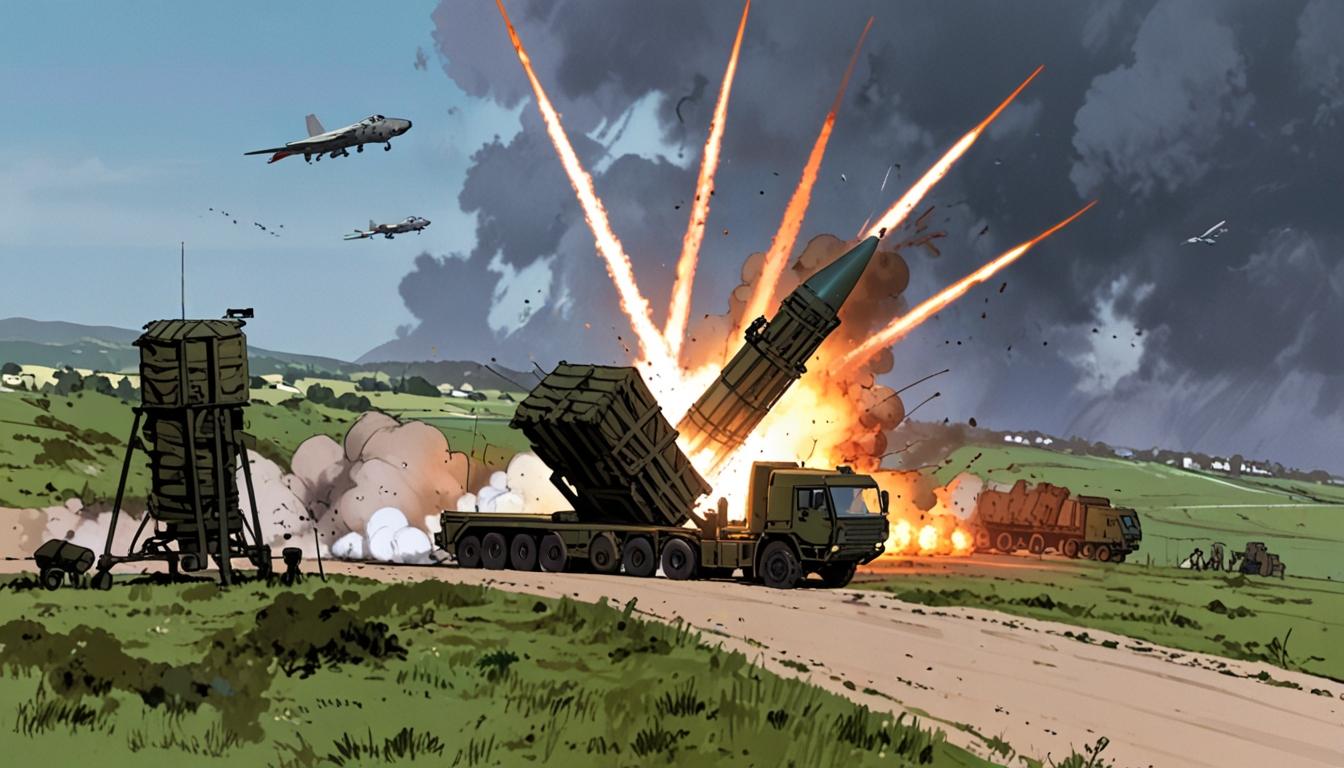In a recent wargaming exercise conducted by the UK’s Air Battlespace Training Centre, defence officials simulated a large-scale missile attack on the United Kingdom inspired by Russia’s 2022 invasion of Ukraine. The simulation, carried out on the Gladiator training system, vividly demonstrated how UK air defences could be overwhelmed by a concerted barrage of Russian missiles and drones, highlighting vulnerabilities in the nation’s current defensive posture.
The scenario mirrored the opening night of Russia’s invasion of Ukraine on 24 February 2022 but was applied to the UK’s airspace and defence capabilities. Air Commodore Blythe Crawford, speaking at a Royal United Services Institute conference in London, described the results of the simulation as “not a pretty picture.” He said, “We’ve stood for years at the western edge of Europe feeling as though the rest of the continent has stood between us and the enemy. Ukraine has made us all sit up, and that drove some of the work we were doing in the warfare centre to get after how we would solve a problem like that if a similar scenario was pitted against the UK.”
Crawford detailed that the complexity and scale of threats have grown significantly over the past three years. The simulation included swarms of hundreds of drones—some acting as decoys, others carrying munitions—posing a complex challenge for air defence systems. He noted, “The challenge is how do you tackle them all, or do you tackle them all? That is a challenge we have right across the West.”
While the UK has made notable improvements to its air defence systems since 2022, integrating aircraft, ships, and land-based platforms, it currently lacks an Iron Dome-style system that provides a high-density, point-defence capability against incoming missiles and drones. Furthermore, an attack on the UK would differ from the conflict in Ukraine due to geographical factors. Ground-launched Russian missiles would need to traverse European airspace, which might complicate an assault. Consequently, an attack could require mobilisation of Russia’s Northern Fleet and missile launches from the Atlantic Ocean.
Crawford emphasised that the evolving threat environment features “swarms of several hundred munitions—not just drones but combined with rockets and ICBMs, at all levels and in all spheres.” He described the conflict in Ukraine as a sobering “wake-up call” demonstrating that integrated air defence systems are not infallible, as neither side has achieved air superiority—a key objective in air operations for decades.
A spokesperson for the UK’s Ministry of Defence, speaking to Business Insider, reaffirmed the country's preparedness, stating, “The UK stands fully prepared to defend itself against any threat alongside our NATO allies. Our military is equipped with a range of advanced capabilities to provide a layered approach to air and missile defence. This includes the world-class Sea Viper missile system, which has successfully shot down a Houthi rebel ballistic missile and attack drones in the Red Sea.”
This simulated exercise underscores ongoing efforts by UK defence authorities to understand and mitigate emerging aerial threats in a rapidly evolving security landscape.
Source: Noah Wire Services
